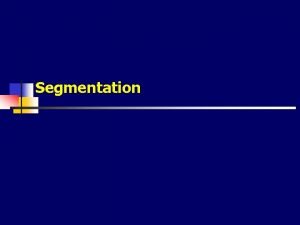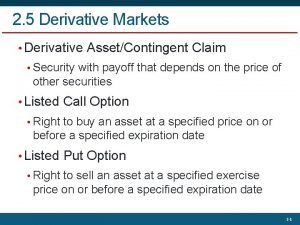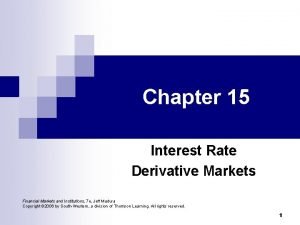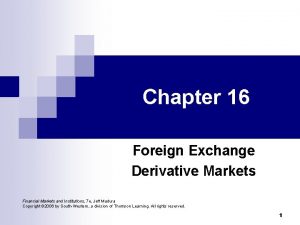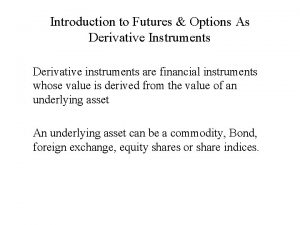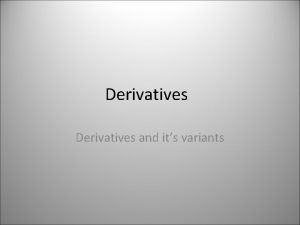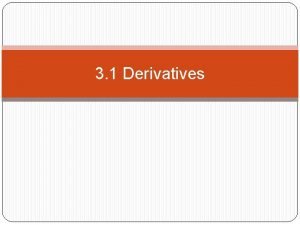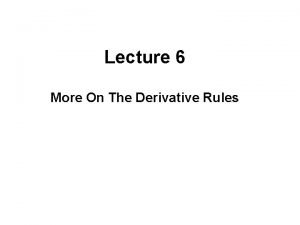CH 04 INTRODUCTION TO DERIVATIVE MARKETS INTRODUCTION In











- Slides: 11

CH. 04 INTRODUCTION TO DERIVATIVE MARKETS

INTRODUCTION • In the era of globalization, the financial markets worldwide have witnessed excessive volatility. • The companies are continuously getting exposed to risk due to fluctuation in the price of commodities, interest rates, foreign exchange rates etc. • Sharp & unexpected movements in the prices has made it very important for the organizations to develop & adopt innovative price risk management tools.

• Derivative products are valuable tool that can be effectively used by the management to control the price volatility. • Derivatives are financial instruments whose returns are derived from underlying assets. • The performance of derivatives depends on the movement in prices of the underlying assets, such as commodities, indices, exchange rates, interest rates etc. • The primary purpose of derivative product is to transfer risk from one party who wants to get rid of it, to another party who is willing to take the risk.

DEFINITION • According to Securities Contracts Regulations Act, “ A Derivative includes: Ø A security derived from a debt instrument, share, loan, whether secured or not, risk instrument or contract for differences or any other form of security; Ø A contract which derives its value from the prices, or index of prices of underlying securities.

ELEMENTS OF DERIVATIVES • It is a legally binding contract • There are 2 parties to the contract – buyer & seller • There is an underlying asset • Future date & Future Price

FINANCIAL DERIVATIVES • Financial Derivative is a financial instrument whose value is based on or derived from one or more underlying financial assets or indexes of assets. • The underlying asset in case of financial derivatives are typically equities, debts, currencies & even indexes. • Financial derivatives are a kind of risk management tools used by investors & portfolio managers.

• The three most important financial derivatives are Forward, Futures & Options. • These are a contract & does not help mobilize funds in the primary market. • These are created by a contractual agreement between two parties based on the price of the underlying asset. • There is usually no limit on the number of contracts that can be created, except in case of exchange traded financial derivatives where the exchange clearing house imposes limits on number of derivatives to be traded

• The growing instability in the financial markets after 1970, the financial derivatives gained importance & became popular. • 2/3 of the total trade in derivatives products was in the form of financial derivatives. • In the recent years, the market for financial derivatives has grown in terms of types of instruments available & their complexity.



 Why study financial markets and institutions?
Why study financial markets and institutions? Contrasting international markets
Contrasting international markets Why do markets exist?
Why do markets exist? Heterogeneous market segmentation
Heterogeneous market segmentation Participants of money market
Participants of money market 5 market forms of meat
5 market forms of meat Hostile market
Hostile market Segmentation is the process of dividing a
Segmentation is the process of dividing a Positioning
Positioning Heren european spot gas markets
Heren european spot gas markets In the labor market
In the labor market 4 types of markets
4 types of markets



